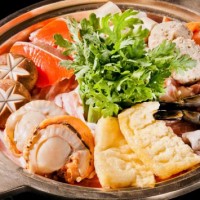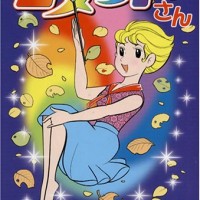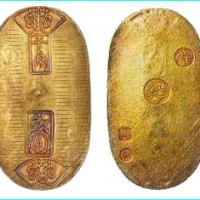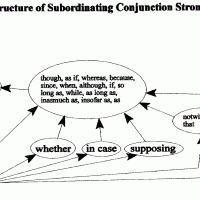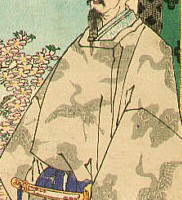blog
Tuesday: Japanese Proverb
01/20/2016 blog
Neko-no Rusu-ni Nezumi-ga Abareru (= When the cat’s away, the mice will play.) (Scary Cat! If he is gone…) (this happens!) Usually “a cat” in this proverb stands for “some authority” while “mice” for “subordinates.” That is, subordinates will take advantage of circumstances in the absence of a controlling entity. (Example) When the teacher left for a few minutes, the children nearly wrecked the classroom. When the cat’s away, the mice will play. Jill: You shouldn’t bereading a novel at your desk. Jane: But the boss isn’t here. And when the cat’s away, the mice will play. [McGraw-Hill Dictionary of American Idioms and Phrasal Verbs. 2002. ] In today’s business …
Monday: One Point Japanese Clinic
01/19/2016 blog
How To Use Conjunctions (5) (https://en.wikipedia.org/wiki/Conjunction_(grammar)#Subordinating_conjunctions) (Today’s Topic – ‘Kara/Because’) According to “Japanese Grammar” (Keiko Uesawa Chevray & Tomiko Kuwahira, McGraw-Hill, 2011), “Kara” is explained this way: The “kara” clause indicates the “reason” for the main clause, and it corresponds to “because” in English. Since the “kara” clause is a subordinate one, the predicate in the clause is usually described in the plain form, and the subject in the clause is marked by “ga” when it is different from the one in the main clause. I. Copula + kara Kino-wa hima datta kara, eiga-wo mini ikimashita. (= I went to see a movie because I was free yesterday.) II. I-adjective + …
Friday: Japanese Hero
01/18/2016 blog
Ichiro (Suzuki) (https://en.wikipedia.org/wiki/Ichiro_Suzuki) (You know him, don’t you?) The Japanese are getting deteriorated year by year, so as the Japanese culture. More and more great Japanese people have passed away without leaving their successors. I have been around in this planet, mainly in Japan and US, for quite a while. As I are getting aged, I find myself alone because I don’t have people I can turn to for a guidance in life. I haven’t achieved anything significant. Days have passed by without me doing anything admirable. A philosopher and poet in Muromachi period (https://en.wikipedia.org/wiki/Muromachi_period) called Hosokawa Yoriyuki read a poem, in which he stated, “I am ashamed of myself at the …
Thursday: Japanese Food
01/17/2016 blog
Chanko Nabe (https://en.wikipedia.org/wiki/Chankonabe) (Chanko Nabe: Watch this interesting video! https://youtu.be/7KcFGjAUgcU) Chanko Nabe used to be exclusively for Sumo (https://en.wikipedia.org/wiki/Sumo) Wrestlers in Japan so they can gain weight as soon as they can. They say Sumo Wrestlers eat only twice – huge meals! They get up and start their harsh training without eating breakfast. After training, they are exhausted and starved to death. At this time, they devour Chanko Nabe! After they became totally full (120%!?), they take a nap. They repeat this every single day so they can put on weight drastically. Chanko Nabe is very nutritious, which helped it to be popular among the general public. (Younger Sumo Apprentices Cooks …
Wednesday: Japanese Manga
01/16/2016 blog
Kometto-san/Princess Comet (https://en.wikipedia.org/wiki/Princess_Comet) (Manga Version) (TV Version) (Opening Song: https://youtu.be/hcKa3EUrd8w) “Kometto-san” started as a TV drama, whose original concept came from an American Classic “Mary Poppins <https://en.wikipedia.org/wiki/Mary_Poppins_(film)>,” in 1967 (79 episodes in total). Then, Yokoyama Mitsuteru (https://en.wikipedia.org/wiki/Mitsuteru_Yokoyama) created and illustrated this cute drama in Bi-Weekly Margaret (girls’ magazine) <https://en.wikipedia.org/wiki/Margaret_(magazine)>. Kometto-san uses the baton when she uses her magic. (Episode 1 – 19 were monochrome: https://en.wikipedia.org/wiki/Monochrome_painting) (Betan) Like Kommeto’s mascot puppet called “Betan (a picture above),” lots of puppetoon (https://en.wikipedia.org/wiki/Puppetoon) were used in this drama. A heroine, Kometto-san, sings throughout the drama and so do the parents, who hired Kometto-san as their nanny for their two boys! Technically speaking, “Kometto-san’ was a musical …
Tuesday: Japanese Proverb
01/14/2016 blog
Neko-wa Kyusho (Ari) (= A cat has nine lives.) (Cat: https://en.wikipedia.org/wiki/Cat) Everything in this world is in balance. In Chinese philosophy, this is called “Yin Yang (https://en.wikipedia.org/wiki/Yin_and_yang).” In animal world, we have heard it said that cats are Yin (animals) while dogs are Yang. This concept or myth has undoubtedly been believed for centuries. One of the good examples is the novel named “Kuro Neko (Black Cat)” written by Edogawa Ranpo (Edgar Allan Poe: https://en.wikipedia.org/wiki/Edgar_Allan_Poe). He wrote a lot of fictions, but this piece is awesome. He established the genre of ‘ghost stories.’ (Poe) In Western world, there is a saying, “A black cat crossing your path will bring you a bad luck.” …
Monday: One Point Japanese Clinic
01/12/2016 blog
How To Use Conjunctions (4) (https://en.wikipedia.org/wiki/Conjunction_(grammar)#Subordinating_conjunctions) (Subordinating Conjunctions Chart) (Yes, it does!) (What Fun!) Today we focus on “Aida/Aida (ni),” which tells you which occurs first or what you did while you are doing XXX, for example. Let’s take a look at those example sentences! I. Noun + no aida/aida ni Gakusei-no aida ni takusan ryokoo-wo suru tsumorida. (= I will travel a lot while I am a student.) II. I-adjective + aida/aida ni Sakana-ga atarashii aida ni shushi-wo tsukurimashoo. (= Let’s make sushi while the fish is fresh.) III. Na-adjective + aida/aida ni Shigato-ga taihenna aida wa, terebi-wa miraremasen. (= I cannot watch TV while I …
Friday: Japanese Hero
01/10/2016 blog
Saito Hitori (Hitori’s Store Logo) Saito Hitori (1948 – ) is a super-successful Japanese entrepreneur, author, speaker, and healer. Without any decent educational background, Saito knows things, sees things, and thrives in everything he does. Lots of people (probably several thousands all over the world) admire him and worship him as a God or a Guru. That is not only because Saito is super-successful in his business, but also because he is spiritually oriented. He claims that a fireball, which only he could see and which he regards as a God, showed up and taught him everything he needed to know about life when he was a kindergartner. Since then, according …
Thursday: Japanese Food
01/09/2016 blog
Kamo Nabe (Low Cholesterol Meat) Another ‘Nabemono (https://en.wikipedia.org/wiki/Nabemono)’ this week! It has been snowing and freaking cold here in New Mexico! How about in your area? Hope you have warmed yourself up to avoid getting sick. It is NOT fun to be sick, is it!? This week’s main ingredient is Kamo (= a wild duck/a mallard). It looks like this: (Before Caught) (After Caught) According to wikipedia.org, Kamonabe is the dish cooked in the pot with Nappa Cabbages, Scallions, Tofu, and so on. Hunters eat meat of Magamo ( = Mallard: https://en.wikipedia.org/wiki/Mallard), which they hunted by themselves while the public eat meat of ducks raised in breeding grounds or Aigamo …
Wednesday: Japanese Manga
01/07/2016 blog
EEsu-wo Nerae (=Aim for the Ace!) (https://en.wikipedia.org/wiki/Aim_for_the_Ace!) (https://youtu.be/2FtI06YX4cg) This manga was really sensational. Like bowling, every one of the Japanese nation wanted to be an Oka Hiromi (the main character). In this manga (1973 – 1975 in “Weekly Margaret”), Hiromi is depicted as an ordinary high school girl, who was interested in playing tennis for fun. Coach Munakata saw a glimpse of ‘diamond’ in Hiromi, however. So, Hiromi is going to turn into a ‘Tennis Queen’ along with ‘Mrs. Butterfly’ with merciless boot camp training by Coach Munakata. This is the whole plot of this manga. (Oka Hiromi) (a.k.a. Mrs. Butterfly) (Coach Munakata) (Comic Version) The writer/illustrator, Yamamoto Sumika (https://en.wikipedia.org/wiki/Sumika_Yamamoto), was not such an excellent …
Tuesday: Japanese Proverb
01/07/2016 blog
Neko-ni Koban (= To cast pearls before swine.) <Koban: https://en.wikipedia.org/wiki/Koban_(coin)> <The Proverb in English> Do you think Koban (= currency of any kind) makes cats happy? You know the answer…. <The Cat Unconcerned About Japanese Bills> Still, are you not trying to lecture the arrogant or the stubborn? Stop it! You are wasting time! Use your time wisely! TIME IS MONEY! Speaking of “TIME IS MONEY,” are you NOT wasting your money by hiring ‘MEDIOCRE’ Japanese teachers FOREVER with NO SIGNIFICANT PROGRESS? STOP IT NOW! Special Trial Lesson $19.99 <– Click here! Buy Trial Lesson ONLY for $19.99, you can tell your problem will be solved!
Monday: One Point Japanese Clinic
01/04/2016 blog
How To Use Conjunctions (3) (https://en.wikipedia.org/wiki/Conjunction_(grammar)#Subordinating_conjunctions) (Courtesy to http://www.clres.com/online-papers/sc.html) I would suggest you should read the paper at http://www.clres.com/online-papers/sc.html, where those diagrams shown above are located. This paper is rather for advanced learners or people like grammarians. So, that’s totally fine if you are not interested in reading it. It is, however, extremely resourceful if you are able to appreciate it. (Review of ‘Subordinating Conjunction) Let’s discuss “mae (= before)” and “ato (= after)” today! [Mae] According to “Japanese Grammar” (Keiko Uesawa Chevray/Tomiko Kuwahira, McGraw-Hill, 2011), “Mae” is an independent noun which means “the front” in English. The Clause or noun phrase of “mae” indicates “the time before -” in English. The …
Friday: Japanese Hero
01/02/2016 blog
Nintoku Tenno/Emperor Nintoku (https://en.wikipedia.org/wiki/Emperor_Nintoku) (Emperor Nintoku) NOT all emperors of Japan are bright and wise. Accordingly not all emperors of Japan were loved by Japanese nation. However, this particular emperor of Japan named Nintoku Tenno or Emperor Nintoku has been loved by 99.99% of the Japanese and this will be certainly true as long as the country of Japan exists in this world. His burial mound located in Osaka is the biggest one in Japan. (Entire View of His Burial Mound) (It is located in the middle of the city, which is well kept.) (Entrance of the Mound) There is one historical episode about Emperor Nintoku, which makes every one of the Japanese …
Thursday: Japanese Food
01/01/2016 blog
Yudofu (https://en.wikipedia.org/wiki/Tofu) (Typical Serving Suggestion) Yu (= Hot Water) + Tofu (= Tofu/Bean Curd) = Yudofu – this is one of the Japanese Nabemono (https://en.wikipedia.org/wiki/Nabemono) in winter season. Although Tofu has earned quite a lot of popularity in US, few Americans would appreciate simple way of cooking Tofu. You must have one of those nabe (=pot), preferably made of porcelain, and, like other Nabemono, you cook Yudofu at the table, surrounded by your family and guests. Soup stock is made with Konbu seaweed (https://en.wikipedia.org/wiki/Kombu), but other than that no sauce or nothing else is supposed to be added. After boiling water, you put Konbu seaweed in the water, waiting for the …
Wednesday: Japanese Manga
01/01/2016 blog
Maguma Taishi/Ambassador Magma (https://en.wikipedia.org/wiki/Ambassador_Magma) (Record Cover Jacket: https://youtu.be/iO8so6xYMXo) (Original Manga) It was not until ‘Maguma Taishi’ was televised that I noticed the existence of its manga, which was started in the magazine called Shonen Gaho (= Picture Magazine for Boys) in 1966. The author of this manga is, once again, Tezuka Osamu (https://en.wikipedia.org/wiki/Osamu_Tezuka). In 60’s, Tezuka was such a busy man that he used a ghost writer for the last chapters of Maguma Taishi in the magazine, which part didn’t turn out to be comics because he didn’t want the publisher to use his name as an author when he didn’t actually get involved in the production. TV version of Maguma Taishi …




